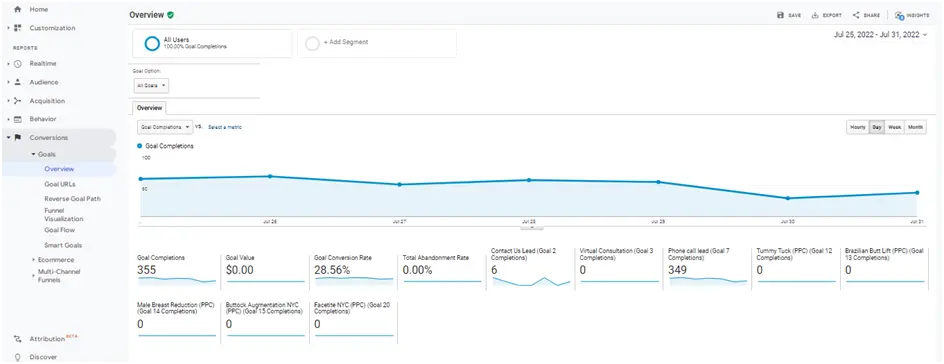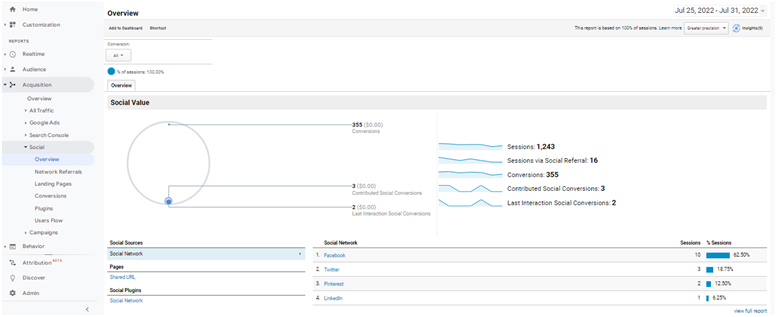Search engine optimization is not just about quality content, keyword research, link building etc. It is also about finding the right target audience to increase traffic which leads to more conversions. Whatever efforts you put into developing something new, it is practically of no use if no one sees it. The key to any effective marketing plan is to target the correct audience. Therefore, SEO audience analysis is important. Working with a search engine optimization company, you can identify your perfect website visitors and also determine the driving forces.
What Is SEO Audience Analysis and Why Is It Important?
Audience analysis is the study of the audience demographic that consumes your content and purchases your goods or services. The major goal of audience research is to define this group so that your messaging and SEO tactics may be altered to suit their needs, wants, and preferences. Finding the distinctive qualities that define your audience is the ultimate objective in audience analysis. Your buyer personas are built on the information about the geography, demographics, language, digital behavior, and other aspects of your audience. The key to understanding who will use your product and how to win over devoted customers is audience analysis.
SEO Audience analysis enables you to identify the target audience for your content as well as the campaign types that lead to better engagement. The user experience is improved by creating these focused campaigns. By putting more effort into cultivating relationships with clients, you may increase audience loyalty, promote awareness of your brand, and grow your clientele.
You’ll decrease the number of lost leads and ultimately increase funnel conversion. SEO Audience analysis also helps you save a substantial amount of time and money in addition to ensuring that your material is accurate, relevant, and interesting to your users. You can focus your search by defining your target group more precisely. This is essential for running an affordable marketing campaign and building brand awareness.
Different Types of Audience Analysis
- Demographic analysis: A demographic analysis will take into account every aspect of your target audience’s demographics and will help you to customize your marketing strategies accordingly. As was previously noted, this can include data on age, gender, race, locality, marital status, and other factors.
- Situational analysis: The size of the audience (how many individuals you are targeting), the occasion (temporal or seasonal), and the level of interest are all aspects that situational analysis for audience research takes into account (strong or low). Your messaging will need to be more targeted if your audience is smaller.
- Psychological analysis: This kind of study focuses on your audience’s attitudes, beliefs, values, and thought processes. These can include fundamental principles like liberty, integrity, and patriotism. Your audience will be more inclined to respect you as a brand, want to listen to what you have to say, and ultimately purchase what you are trying to offer if you can match your messaging with their worldview. Your brand may speak to them. Knowing your audience enables you to advance and develop a more fruitful bond with them.
- Multicultural analysis: Even though audience analysis is fundamentally about identifying what your customers have in common, it’s also crucial to recognize how they differ. The diversity of your audience should be supported by any marketing plan you decide to use. A customer who feels insulted is unlikely to buy from you again, thus cultural sensitivity and diversity should always be a part of your strategy to be able to understand and connect with your audience. To truly understand your audience, you could collaborate with regional leaders or influencers who are representative of them.
Different Methods to Research and Analyze Your Audience for SEO
There are different methods that will help you research and analyze your audience for SEO.
- Keyword research to obtain demographic information: One of the essential components of SEO is keyword research. To improve the exposure and search engine rankings of your website, business, products, or services, you must have looked up relevant and targeted keywords. You can choose effective keywords for your website and quickly learn the demographic connections between them. To get these key data, you can also use the tool demographics.io or rely on Google Trends for localized demographic data. It will be easy to look for local link possibilities, subjects, and other interests regarding the audience to be targeted based on the information about age, gender, and location.
- Know your visitors using Google Analytics: Knowing who is visiting your website is possible, and using that data, you can decide whether you are reaching the correct demographic. For this, you can utilize Google Analytics to obtain comprehensive data regarding site visitors. This application makes it simple to provide information about a wide range of audiences, such as age, interests, and location. You can leverage the data you’ve obtained with Google Analytics to gain important insights into your audience and provide content topics for targeted locations. The information might not always align with the goals of the website or company, in which case you should reevaluate the keyword and content to find the ideal balance with your interest.
- Spend time analyzing competitors: If the goal of SEO is to learn more about the audience, understanding your website and others in the field are equally vital. In reality, one of the fundamental principles of optimization is competitor analysis, which you may use to your benefit. You can have a solid understanding of the target market by studying different brands. Quantcast, Alexa, and YouGov are the three tools that can be useful when analyzing competing brands. All of these methods can be quite useful for gaining understanding of the audience, and you can utilize the knowledge to choose content themes for the appropriate geographic locations.
- Make use of social insights: One of the quickest ways to gather data and information about the audience is through the usage of social media. You can use platforms like Facebook and Twitter, which have wide geographic and regional reach, to help you better understand your audience. Furthermore, you may learn more about your target audience by knowing about your competitors as well as your own audience through social media. Additionally, there are tools like Facebook Insights that can assist in digging deep into the numerous crucial data points about individuals from any certain area.
- Make content that addresses common queries: As we know, Google has begun immediately displaying responses on search engine results pages. Therefore, learning about typical user questions has become extremely simple. Today, an increasing number of webmasters make an effort to create content based on frequently asked questions in order to increase the likelihood of long-tail queries. Additionally, you can use well-known tools like BuzzSumo and SEMrush to profit from data from multiple sources. You may increase your chances of appearing as direct responses in SERPs by asking the proper queries. This is how you can take audience research to a new level and profit from SEO.
- Send surveys: Surveys have been utilized for a long time to comprehend an audience and learn specifics about them along important metrics of choice. Anytime you feel the need to better understand your audience, you can send out a survey. The survey’s questions are crucial in determining the type of data or reaction obtained from the audience.You can conduct an online survey to learn more about the audience by including questions about their interests, needs, demographics, and pain areas. Naturally, the data acquired from a survey can be used to perfectly use content. Therefore, you can gain from the study and make a major move toward improving the returns from SEO.
- Research secondary data: Analyzing and researching your audience is more difficult than it initially appears to be. The majority of the time, the primary data is insufficient to help your SEO campaign. At this point, you should consider switching to secondary data research to maximize the benefits of your optimization efforts. The secondary data can then be used to develop a persona for your business or website and better serve the audience in all circumstances.
Using all of the methods listed above, you can gain a clear image of your target market and track consumer insights based on where and how they spend their online time. If you are aware of these qualities of your clients, it will be easier for you to plan your ideal SEO and content strategy. Additionally, you can collaborate with a search engine optimization company to pinpoint your target market, improve your relevance in organic search results, and provide guidance for your continuing SEO plan.






